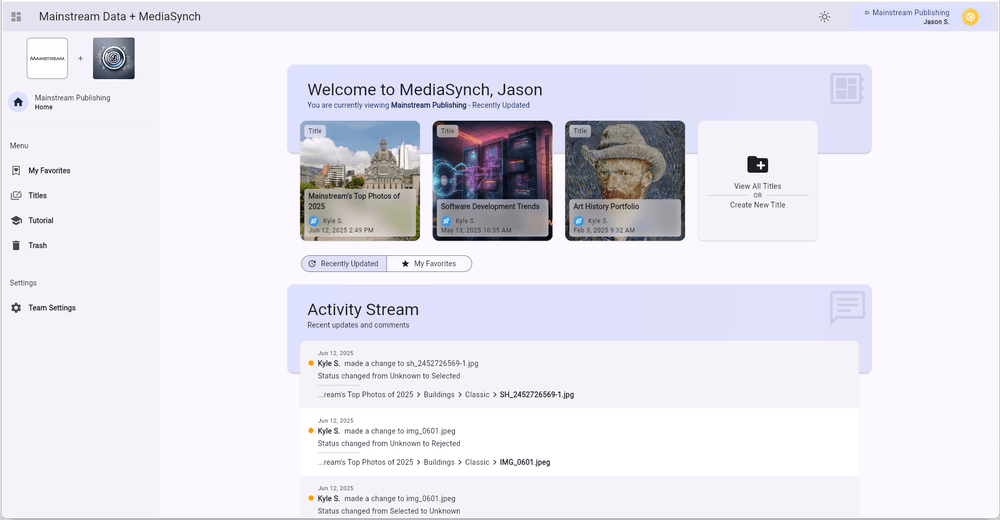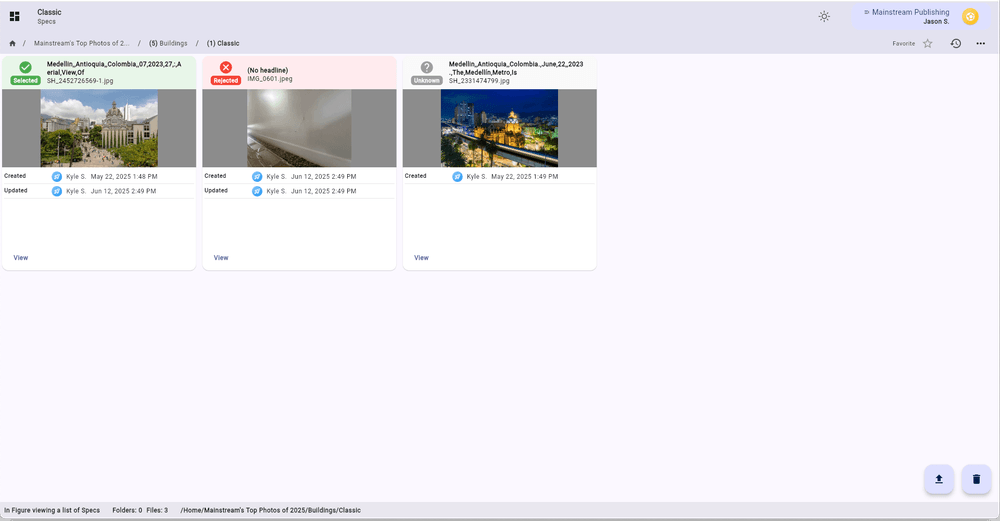From Chaos to Clarity: Rethinking Photo Selection in Publishing

In the fast-paced world of publishing—whether you’re working on a new book, a magazine feature, or a digital content series—one process continues to slow teams down: image selection.
What should be a creative and collaborative effort is often bogged down by endless email threads, shared folders with cryptic filenames, and a lot of crossed fingers that everyone’s working from the latest version. And with editorial teams increasingly remote or distributed, the cracks in this system have only widened.
So why are so many publishing teams still stuck using outdated workflows for one of the most visual and collaborative steps in their process?
The Real Cost of a Broken Image Workflow
When you’re coordinating image approvals across multiple chapters, editors, designers, and researchers, it’s easy to lose track:
Which images were marked as final?
Who approved this photo?
Where’s the high-res version again?
Are we still waiting on feedback for Chapter 8?
Multiply those questions across dozens—or hundreds—of images, and the delays, miscommunications, and version control issues can cost teams time, budget, and sanity.
You may already be using tools like Dropbox, Google Drive, or email to coordinate images. But those tools weren’t built for image selection in publishing—they were built for file storage or communication, not workflow clarity.
Introducing MediaSynch™: Built for the Way Publishers Work
That’s where MediaSynch™ comes in.
Designed specifically for content publishers, MediaSynch reimagines the photo selection and approval process from the ground up. It’s not just another digital asset manager—it’s a full collaboration system for your editorial and visual teams to stay in sync, from research to final layout.

With MediaSynch, you can:
- View everything in one place: Projects, chapters, and image statuses are clearly laid out in a dashboard that gives everyone the same view.
- Collaborate in real-time: Leave threaded comments, tag teammates, suggest or reject images with a click—without switching platforms or losing version control.
- Assign roles and stay accountable: Whether you’re a researcher, editor, or author, everyone gets the right access and responsibilities.
- Export your selections with all relevant metadata, ready for production.

Why It Matters Now
Publishing isn’t slowing down—it’s speeding up. Deadlines are tighter. Teams are remote. Budgets are leaner.
That means you can’t afford to spend hours each week just figuring out where things stand. MediaSynch gives your team the clarity and tools they need to focus on what they do best—creating beautiful, meaningful content—without the overhead of chaos.
Whether you’re finalizing a photo essay for your magazine’s next issue or sourcing visuals for a textbook with hundreds of figures, MediaSynch scales to fit your team’s needs.
Ready to Try It?
You don’t need to overhaul your entire tech stack to make a massive impact. MediaSynch connects with your existing tools and scales to fit teams of all sizes. Curious if it’s right for your workflow?
Request a demo and we’ll walk you through a live project.
Final Thought: The Creative Work Deserves Better
Your content is too important to be bottlenecked by outdated tools. The creative, visual side of publishing should feel energizing, not frustrating.
MediaSynch was built by people who’ve lived those late-night deadlines and folder chaos. We believe great publishing deserves great process. Let us help you get there.